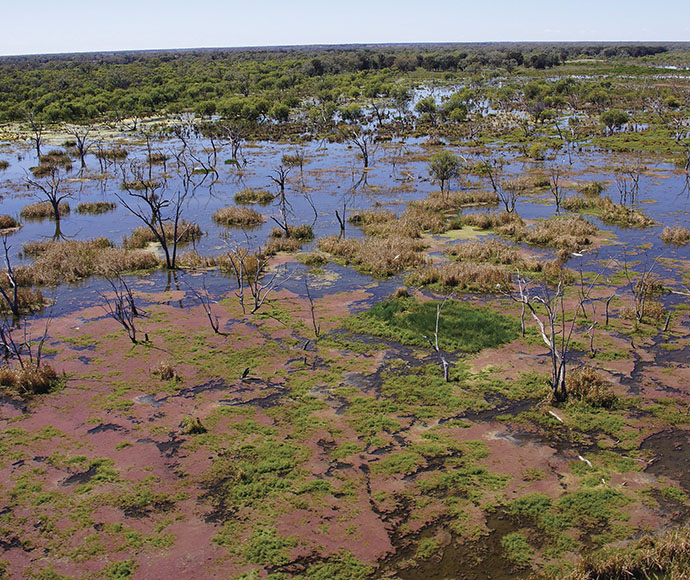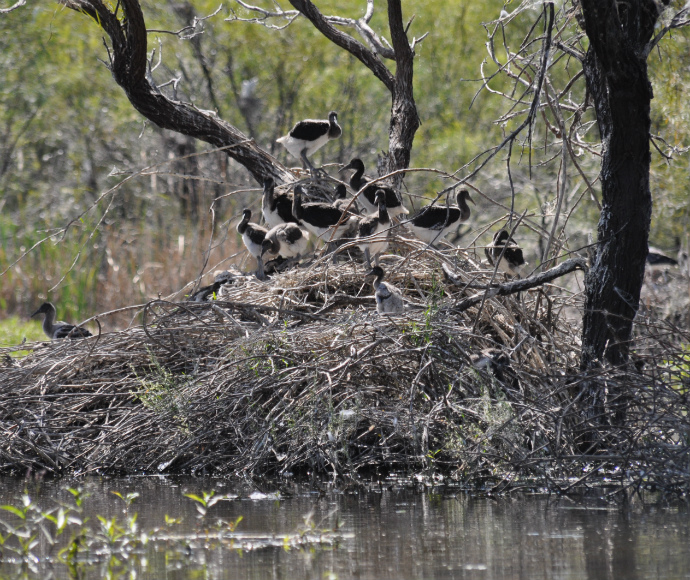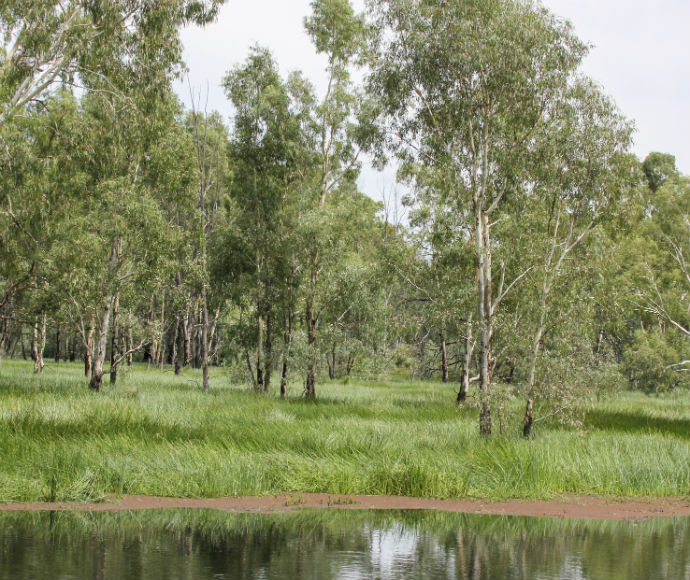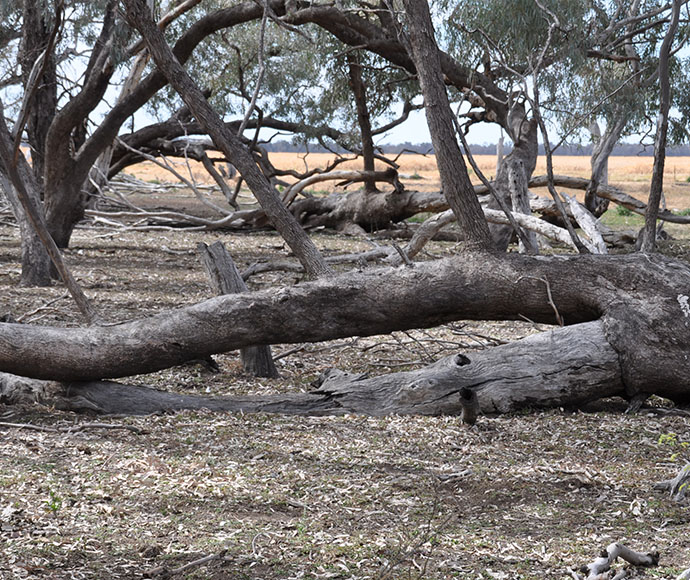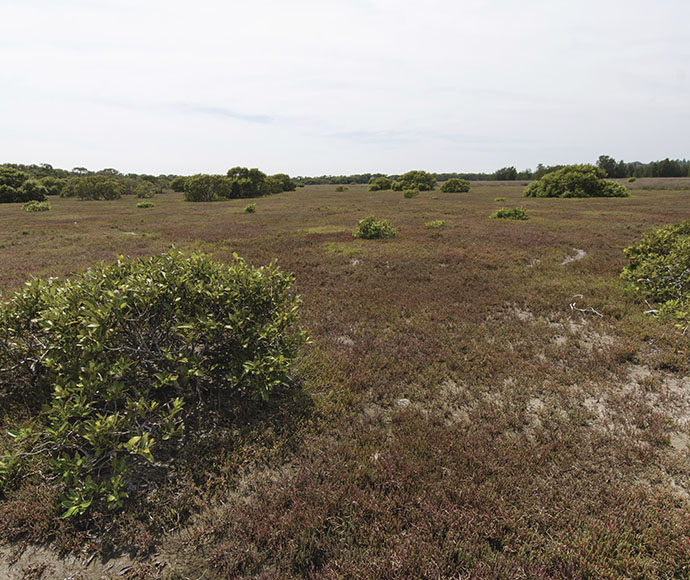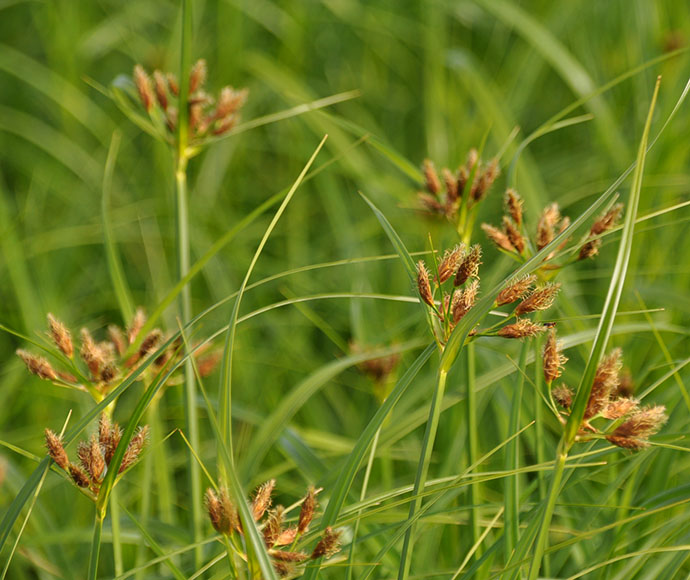Different kinds of wetland are home to different types of plant, depending on 2 main factors:
- whether the wetlands have mostly fresh, salty or brackish (slightly salty) water
- whether the wetlands are always wet or switch between being wet and dry (whether they’re permanent, semi-permanent or ephemeral wetlands).
Other factors include whether there’s surface or underground drainage, what the soil is like, the temperature in the region, the amount of rainfall and the area’s topography (its physical features).
Wetlands in New South Wales can be categorised in 3 ways, depending on the types of plant they support:
Plants that grow in wetlands
Inland wetlands
Inland wetlands consist of forested, freshwater and saline wetlands. They include inland riverine forests, floodplain shrublands, floodplain swamps, saline (saltwater) lakes and montane (mountain) lakes, bogs and fens. They can be divided into 3 groups that are dominated by different types of plant.
Ephemeral wetlands
These experience irregular flooding and long dry periods. They are dominated by lignum, river red gum, black box, coolabah and other plants that thrive in dry areas. These species can tolerate years of drought or low river flows.
Semi-permanent wetlands
These are usually flooded every year. They are dominated by sedges, rushes, spike-rushes, water couch, common reed, and herbs and forbs such as water primrose and nardoo.
Permanent wetlands
These are always or nearly always flooded. They include montane lakes and are dominated by aquatic plants such as ribbonweed and wavy marshwort.
Coastal and marine wetlands
Coastal and marine wetlands in New South Wales also consist of forested, freshwater and saline wetlands. They include coastal floodplain wetlands, swamp forests, eastern riverine forests, freshwater lagoons, heath swamps, saltwater lakes, mangrove swamps, saltmarshes and seagrass meadows.
Plants in coastal wetlands have become especially adapted to different levels of salt in the water:
- Many have adapted to soils that are waterlogged permanently or for long periods and are anaerobic (lacking in oxygen). They include trees such as swamp mahogany, swamp paperbark and swamp she-oak, and shrubs like the swamp banksia, tea trees and ferns.
- Saltmarshes feature plants such as pigface, sea rush, marine couch, creeping brookweed and swamp weed, all of which are adapted to saltier conditions.
- Mangrove swamps feature various species of mangrove, which is a small tree that grows in coastal saltwater or brackish water. There are at least 5 species in New South Wales: the grey mangrove, river mangrove, large-leaved mangrove, red mangrove and milky mangrove (also known as the blind-your-eye mangrove).
- Marine wetlands, which include shallow ocean waters and rocky headlands, are dominated by seagrasses such as marine eelgrass and paddleweed, which have adapted to thrive in salt water.
How wetland plants support animals
Wetland plants provide habitats for many animals by providing a place for breeding, feeding and hiding.
Shrubs and rushes
Many birds live or take cover in shrubs and rushes in inland wetlands. These plants include lignum, a shrub used by ibis and other waterbirds for nesting, and cumbungi and Juncus, rushes used by swamp hens and ducks.
Trees
Both living and dead trees provide habitat for many animals. For example, swamp mahogany trees provide feeding and shelter for threatened species such as the endangered regent honeyeater, koala, grey-headed flying fox and eastern blossom bat.
River red gums provide nesting habitat for waterbird species. They also provide hollows for marsupials such as the endangered squirrel glider, and for birds including the superb parrot. This parrot breeds in red gum forests along the Murray and Murrumbidgee rivers.
Mangroves in coastal wetlands provide protection for many fishes to spawn and provide roosting habitat for waterbird species.
Plants in protected wetlands
Many wetland plant communities are protected because they have been listed as endangered under the Biodiversity Conservation Act 2016. Without this protection, they would face the following threats:
- clearing for agriculture and development
- river regulation and water diversion for irrigation, which is especially the case for inland floodplain wetlands.
Some wetland plant communities are also protected because of their unusual ecological characteristics or because they are the only example of their kind. They include the Artesian Springs Ecological Community in western New South Wales, Lagunaria Swamp Forest on Lord Howe Island and Blue Mountains Swamps.
Helping wetland plants thrive
Deliveries of environmental water typically extend the duration and extent of flooding. This enables plants and animals to breed successfully and ensures that wetland species and ecosystems survive and thrive. Environmental water has helped the following wetlands:
- Stands of common reed in wetlands such as the Macquarie Marshes need annual flooding to survive, but natural flooding no longer occurs as frequently as it used to.
- Large stands of lignum are used by colonial nesting birds such as egrets and ibises. They are found in wetlands such as the Gwydir Wetlands, Narran Lakes and Lower Lachlan and require regular flooding to survive.
- Large areas of river red gum woodland in the north marsh of the Macquarie Marshes were in poor condition during the 2001 to 2009 drought, with some of their wetland understorey being replaced by drier saltbush vegetation.
- Areas of red gum woodland in the Werai Forests on the Edward River were also in serious decline as a result of insufficient flooding.


